Revolutionizing Spaces: Commercial Vertical Garden Solutions offer a new and innovative way to transform business areas into eco-friendly, visually appealing, and space-saving environments. With the rising demand for sustainability and urban greening, commercial vertical gardens are gaining popularity for their ability to bring nature into urban landscapes and revitalize spaces.
Key Takeaways:
- Commercial vertical garden solutions revolutionize spaces by incorporating greenery into business areas.
- Vertical farming is a form of agriculture that enables the cultivation of crops in vertical structures like buildings.
- Vertical farming offers numerous benefits, including water conservation and space-saving advantages.
- Various techniques can be employed in vertical farming, such as hydroponics and aeroponics.
- Vertical farming has diverse applications, including addressing food deserts in urban areas.
- Starting a vertical farm requires careful planning and investment, but numerous options are available.
- Notable examples of vertical farming solutions showcase innovative approaches.
- The Garden Stack and RailScapes are two notable examples of modular vertical gardening solutions.
- Commercial vertical garden solutions have the potential to transform spaces and contribute to a sustainable future.
- Further reading and resources are available for those interested in commercial vertical garden solutions.
What is Vertical Farming?
Vertical farming, a form of agriculture specifically designed for vertical structures, is revolutionizing the way we grow crops in urban areas. Instead of traditional horizontal farming methods that require large plots of land, vertical farming utilizes vertical structures like buildings, greenhouses, and repurposed warehouses to maximize space and increase crop yield.
One of the key advantages of vertical farming is its ability to be implemented in areas with limited space, such as densely populated cities. By utilizing vertical structures, farmers can grow crops in areas where traditional farming would be impossible or highly inefficient. This innovative approach helps address the challenge of producing enough food to feed urban populations that rely heavily on imported food.
Vertical farming also offers several sustainability benefits. It requires significantly less water compared to traditional farming methods, with estimates suggesting up to 95% less water usage. The use of closed-loop irrigation systems allows for water recycling and minimizes evaporation. Furthermore, vertical farming reduces the need for pesticides and herbicides, as the controlled indoor environment helps prevent pest infestations and disease outbreaks.
The controlled conditions provided by vertical farms enable year-round cultivation of crops, eliminating dependency on seasonal changes and weather conditions. This consistent production allows for a reliable and steady supply of fresh produce, reducing reliance on long-distance transportation and storage. Additionally, vertical farming has the potential to address “food deserts,” areas with limited access to fresh fruits and vegetables, by bringing food production closer to urban populations.
Overall, vertical farming has the potential to revolutionize urban agriculture and contribute to a more sustainable and resilient food system. By maximizing space, conserving water, and providing year-round crop cultivation, vertical farming offers a promising solution to meet the growing demand for fresh and nutritious food in urban areas.
Benefits of Vertical Farming
Vertical farming offers numerous benefits, including reduced water usage and the ability to maximize limited space. This revolutionary form of agriculture allows crops to be grown inside vertical structures like buildings, making it an ideal solution for urban areas where land is scarce. Here are some of the key benefits of vertical farming:
- Sustainable Farming: Vertical farming requires significantly less water compared to traditional farming methods. By utilizing advanced irrigation systems and recycling water, vertical farms can reduce water usage by up to 95%. This makes it a more sustainable option for agricultural production, conserving one of our most precious resources.
- Space-saving: Vertical farming utilizes vertical space rather than traditional horizontal fields, allowing for the cultivation of crops in a smaller footprint. According to the Vertical Farming Institute, every square meter of floor space given to vertical farming produces approximately the same amount of vegetable crops as 50 square meters of conventional farmland. This space-saving advantage is particularly valuable in densely populated urban areas where land is limited.
- Year-round Cultivation: Vertical farms provide controlled environments that allow for year-round cultivation of crops. By regulating factors such as temperature, light, and humidity, vertical farming ensures optimal growing conditions regardless of external weather conditions. This continuous production can help meet the demand for fresh, locally grown produce throughout the year.
- Reduced Environmental Impact: Vertical farms offer the potential to reduce the reliance on pesticides and herbicides that are commonly used in traditional farming. The controlled conditions of vertical farming minimize the risk of pest infestations, reducing the need for chemical interventions. Additionally, vertical farming produces minimal soil erosion and has little to no impact on local natural soils, making it a more environmentally friendly option.
- Addressing Food Deserts: Vertical farms can play a crucial role in addressing food deserts, which are areas with limited access to fresh, nutritious food. By bringing food production closer to urban centers, vertical farms can improve access to fresh produce and reduce the dependence on long-distance transportation. This not only benefits the health and well-being of urban populations but also contributes to the local economy.
Overall, vertical farming offers a sustainable and innovative approach to agriculture, providing a solution to the challenges of limited space, water scarcity, and food accessibility in urban areas. With its potential to revolutionize the way we grow food, vertical farming holds great promise for a more resilient and sustainable future.
| Benefits of Vertical Farming | Description |
|---|---|
| Sustainable Farming | Vertical farming requires significantly less water compared to traditional farming methods. It also reduces the need for pesticides and herbicides. |
| Space-saving | Vertical farming utilizes vertical space, allowing for more crops to be grown in a smaller footprint. |
| Year-round Cultivation | Vertical farms provide controlled environments that allow for continuous crop production throughout the year. |
| Reduced Environmental Impact | Vertical farms have minimal soil erosion and little to no impact on local natural soils. They also reduce the reliance on chemical interventions. |
| Addressing Food Deserts | Vertical farms can bring food production closer to urban areas, improving access to fresh produce in food deserts. |
Quote:
“Vertical farming is a sustainable and innovative approach to agriculture, providing a solution to the challenges of limited space, water scarcity, and food accessibility in urban areas.”
Vertical Farming Techniques
Vertical farming employs various techniques, including hydroponics and aeroponics, to cultivate plants without the need for traditional soil-based methods. These innovative techniques offer numerous advantages in terms of resource efficiency and crop yield.
Hydroponics is a widely used method in vertical farming. It involves growing plants in nutrient-rich water solutions, eliminating the need for soil. The plants’ roots are submerged in the solution, which is continuously circulated to provide essential nutrients. This technique allows for precise control over nutrient levels and water consumption, resulting in efficient resource utilization and accelerated plant growth. Hydroponics systems can be designed using different setups such as nutrient film technique (NFT) or deep water culture (DWC).
Aeroponics is another technique gaining popularity in vertical farming. In aeroponics, plants are grown in an air or mist environment without soil. Instead, the roots are suspended in a nutrient-rich mist, which provides the necessary nutrients for growth. This method allows for even greater water efficiency compared to hydroponics, with some estimates suggesting over 90% less water usage. Aeroponics also eliminates the risk of soil-borne diseases, as the plants are not in direct contact with soil.
Both hydroponics and aeroponics offer significant benefits for vertical farming. These techniques allow for precise control over growing conditions, enabling year-round cultivation and higher crop yields. The absence of soil reduces the risk of disease and pests, leading to healthier plants. Additionally, both methods use less water compared to traditional soil-based farming, contributing to greater sustainability.
Comparison of Hydroponics and Aeroponics
| Technique | Advantages | Disadvantages |
|---|---|---|
| Hydroponics |
|
|
| Aeroponics |
|
|
Overall, both hydroponics and aeroponics offer innovative solutions for vertical farming, enabling efficient resource utilization, year-round cultivation, and higher crop yields. These techniques have the potential to revolutionize agriculture by providing sustainable and space-saving alternatives to traditional soil-based farming methods.
Applications of Vertical Farming
Vertical farming has the potential to address the issue of food deserts by providing fresh and locally sourced produce in urban environments. Food deserts, which are heavily populated areas lacking access to fresh fruits and vegetables, can be found in many cities. These areas often have limited or no grocery stores, making it difficult for residents to obtain nutritious food options. Vertical farming offers a solution by allowing crops to be grown in vertical structures like buildings, bringing agriculture closer to where people live and work.
One of the main advantages of vertical farming is its space-saving nature. By utilizing vertical space instead of traditional horizontal farmland, vertical farms can grow a significant amount of food in a smaller footprint. This makes vertical farming particularly suitable for urban environments where land is limited. With vertical farms, food can be grown vertically on stacked surfaces or within repurposed buildings, warehouses, or shipping containers, maximizing the efficiency of available space.
In addition to addressing food deserts and saving space, vertical farming also offers other benefits. It is a more sustainable form of farming compared to traditional methods, as it requires less water and has minimal impact on natural soils. Vertical farms can be operated without the use of pesticides and herbicides, making them environmentally friendly. These farms also provide the opportunity for year-round cultivation of crops, ensuring a consistent supply of fresh produce regardless of the season.
To further illustrate the potential of vertical farming, let’s take a look at a few notable examples:
- Hydroponics – a system of growing plants without soil, using nutrient-rich solutions. This method is commonly used in vertical farming and allows for efficient water usage.
- Aeroponics – a technique that involves growing plants with no soil and minimal water. Seeds or seedlings are placed in foam pieces and exposed to nutrient mist. Aeroponics is highly efficient, using over 90% less water than traditional hydroponics.
- Garden Stack – a modular vertical gardening system designed for home use. It combines ancient olla irrigation techniques with modern technology, providing a self-watering solution for growing plants indoors. (Image source:
 )
) - RailScapes – innovative clips that allow for the creation of multi-tiered balcony gardens. These clips can be easily attached to railings, providing a functional and space-efficient solution for outdoor or indoor gardening.
These examples showcase the versatility and advancements in vertical farming, offering innovative solutions to grow fresh produce efficiently and sustainably. As the concept continues to evolve, vertical farming has the potential to revolutionize the way we address food deserts, promote urban agriculture, and ensure fresh food accessibility for all.
| Advantages of Vertical Farming | Examples |
|---|---|
| – Addresses food deserts in urban environments | – Hydroponics |
| – Space-saving and efficient use of land | – Aeroponics |
| – Sustainable farming with minimal water usage | – Garden Stack |
| – Year-round cultivation of crops | – RailScapes |
How to Start Vertical Farming
Interested in starting your own vertical farm? This section will provide insights into the different approaches and investment options for aspiring vertical farmers.
When it comes to starting a vertical farm, there are several approaches you can take. For small-scale or home-based vertical farming, you can create your own system using simple materials like old pallets or custom-made solutions. This can be a cost-effective way to get started and experiment with different techniques.
If you’re looking for a more streamlined and professional option, there are pre-packaged vertical farming solutions available that can be customized to fit your needs. Companies like Garden Stack offer modular vertical gardening systems designed for home use. These systems combine traditional olla irrigation techniques with modern technology, allowing for easy and efficient watering of plants without the need for constant connectivity.
For those interested in larger-scale vertical farming, you have the option to invest in existing vertical farms or start your own. Investing in existing vertical farms can be a way to support the industry while also potentially earning a return on your investment. Alternatively, if you have the capital and resources, you can set up your own vertical farm. This will require larger upfront costs but can offer greater control and flexibility in your farming operations.
| Approach | Pros | Cons |
|---|---|---|
| Small-scale DIY | – Cost-effective – Flexibility in design – Learning and experimental opportunities | – Limited scale and production capacity – Requires manual maintenance and monitoring |
| Pre-packaged solutions | – Streamlined and professional – Customizable options – Easy assembly and maintenance | – Higher upfront cost – Limited scalability |
| Investing in existing farms | – Support the industry – Potential for returns on investment | – Limited control over operations – Potential risks and uncertainties |
| Starting your own farm | – Full control and flexibility – Potential for scalability – Tailored to your specific goals | – Higher upfront costs – Requires extensive planning and resources |
Starting a vertical farm can be an exciting and innovative venture. Whether you choose to start small or go big, the key is to research and plan carefully, considering factors such as location, market demand, and available resources. With the right approach and investment, vertical farming has the potential to not only provide fresh and sustainable food but also contribute to the transformation of urban spaces.
Resources and Further Reading
- Vertical Harvest
 – Learn more about vertical farming and its potential to revolutionize agriculture.
– Learn more about vertical farming and its potential to revolutionize agriculture. - Garden Stack
 – Discover the modular vertical gardening system for home use.
– Discover the modular vertical gardening system for home use. - Plant Traps
 – Explore innovative vertical gardening solutions.
– Explore innovative vertical gardening solutions.
“Starting a vertical farm can be an exciting and innovative venture. Whether you choose to start small or go big, the key is to research and plan carefully, considering factors such as location, market demand, and available resources.”
As the demand for sustainable and locally sourced food continues to grow, vertical farming presents a promising solution. By embracing this innovative approach, aspiring vertical farmers can contribute to a more sustainable and resilient future in agriculture.
Notable Examples of Vertical Farming
Explore some of the innovative and notable examples of vertical farming solutions that are making a difference in the agriculture industry.
1. Vertical Harvest: Vertical Harvest is a prime example of urban vertical farming. Located in Jackson Hole, Wyoming, this three-story greenhouse is built into the side of a parking garage. It utilizes hydroponic systems to grow a variety of vegetables year-round, providing fresh produce to the local community. Vertical Harvest is not only a sustainable farming solution but also serves as a job creation platform for individuals with disabilities, promoting inclusivity and social impact.
2. Bright Agrotech: Bright Agrotech specializes in vertical farming systems and technologies. Their ZipGrow towers are vertically stacked hydroponic units that allow for high-density cultivation. These towers can be easily integrated into existing structures, such as greenhouses, to maximize space utilization. With their innovative approach, Bright Agrotech is revolutionizing commercial vertical farming practices.
3. Aerofarms: Aerofarms is a leading vertical farming company based in Newark, New Jersey. They utilize aeroponic systems, which involve growing plants in a mist environment without soil. With their advanced technology and vertical farming expertise, Aerofarms is able to produce high volumes of leafy greens and herbs in a controlled indoor environment. Their vertical farming practices have significantly reduced water usage and minimized the environmental impact of traditional farming methods.
4. Plantagon: Plantagon is a Swedish company that is pushing the boundaries of vertical farming with their innovative geodesic domes. These spherical structures maximize sunlight exposure and create optimal growing conditions for crops. Plantagon’s vertical farms are designed to be integrated into urban environments, providing fresh produce and improving food security in densely populated areas. Their unique approach to sustainable agriculture has garnered international recognition.
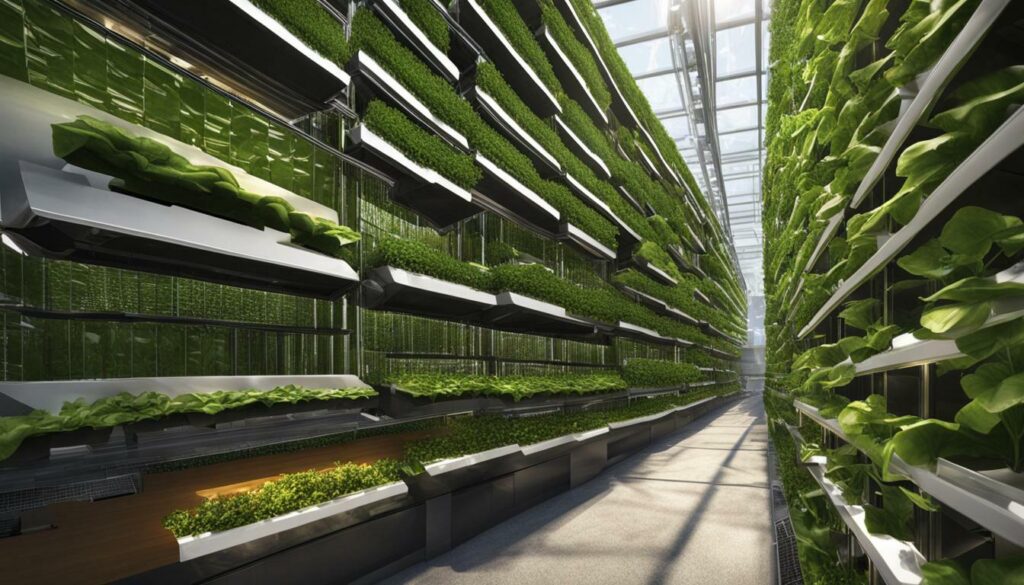
The Benefits of Innovative Solutions
The implementation of innovative vertical farming solutions offers numerous benefits for sustainable agriculture. These solutions not only address the challenges of limited space and water scarcity but also promote local food production and reduce the carbon footprint associated with long-distance transportation.
By utilizing advanced technologies and cultivation techniques, these vertical farms are able to optimize resource usage, reduce waste, and provide fresh, nutritious produce to communities year-round. They also act as living laboratories for exploring new ways of farming and developing sustainable agricultural practices for the future.
| Vertical Farm | Location | Technique |
|---|---|---|
| Vertical Harvest | Jackson Hole, Wyoming | Hydroponics |
| Bright Agrotech | Various locations | Hydroponics |
| Aerofarms | Newark, New Jersey | Aeroponics |
| Plantagon | Sweden | Geodesic domes |
These notable examples of vertical farming demonstrate the potential of this innovative approach to agriculture and highlight the strides being made towards a more sustainable and efficient food production system.
Garden Stack: Innovative Vertical Gardening Solution
Discover the Garden Stack, an innovative and space-efficient vertical gardening solution that brings the benefits of full automation to home gardening. With its modular design and soil-based approach, the Garden Stack offers a unique and efficient way to grow plants indoors year-round. By combining the ancient olla irrigation technique with modern technology, this vertical farming system eliminates the risk of over- and under-watering, making it a healthy habit you’ll want to keep.
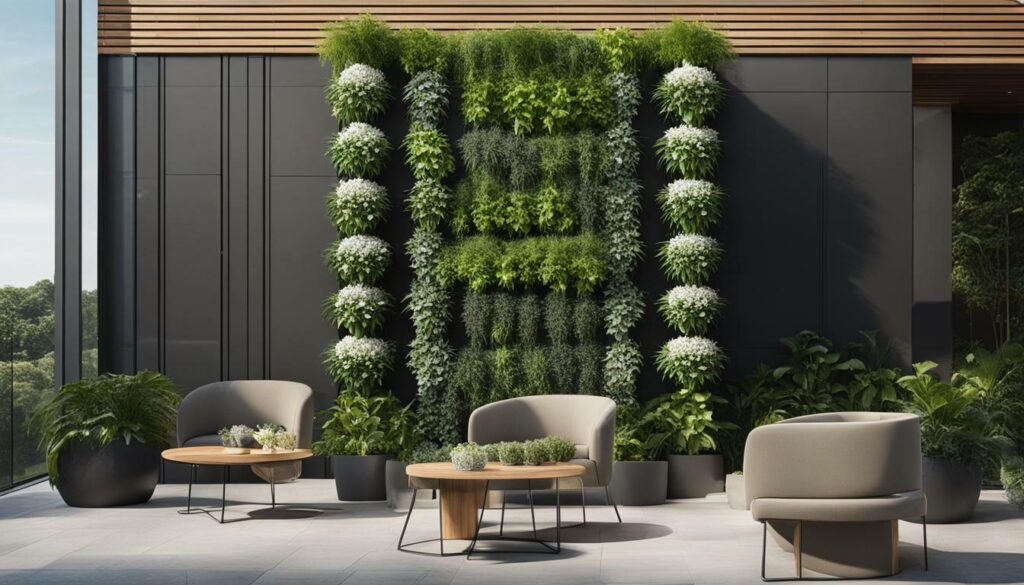
Garden Stack provides a solution for growing food at home, addressing the challenges of conventional agriculture and current vertical farming solutions. The system is designed for easy assembly and shipping, utilizing 3D printers for sustainable production. By relying on soil-based irrigation, Garden Stack improves nutrition and flavor while protecting the roots of plants, allowing for temperature and nutrition fluctuations. Unlike hydroponics, Garden Stack returns to a soil-based approach, making it more suitable for a home environment.
- Modular design for easy assembly and storage
- Utilizes olla irrigation technique for efficient water use
- Soil-based approach for improved nutrition and flavor
- Sustainable production with 3D printers
Whether you have limited space or simply want an innovative way to display your plants, RailScapes Vertical Gardening Clips are the ultimate solution for creating a beautiful balcony garden. With easy installation and adjustable elevation, these clips allow you to create a stunning and functional vertical garden on any railing. Say goodbye to traditional gardening limitations and “rail-scape” your way to beautiful and sustainable outdoor living spaces.
Key Features of Garden Stack:
- Modular design for easy assembly and storage
- Utilizes olla irrigation technique for efficient water use
- Soil-based approach for improved nutrition and flavor
- Sustainable production with 3D printers
| Garden Stack | RailScapes |
|---|---|
| Modular design for easy assembly and storage | Easy installation on metal, wood, and vinyl railings |
| Utilizes olla irrigation technique for efficient water use | Adjustable elevation for a customizable vertical garden |
| Soil-based approach for improved nutrition and flavor | Versatile and functional for outdoor or indoor spaces |
| Sustainable production with 3D printers | No tools required for installation |
“RailScapes Vertical Gardening Clips are the ultimate solution for creating a beautiful balcony garden.”
RailScapes: Creating Multi-Tiered Balcony Gardens
RailScapes offers an innovative solution for creating stunning and functional multi-tiered balcony gardens using their vertical gardening clips. These clips, designed by Plant Traps founder Deborah Holtschlag, provide a tool-free way to suspend up to 15 lb. plants at any elevation on the railing, making them a versatile option for outdoor or indoor spaces.
The RailScapes clips can be easily attached to metal, wood, and vinyl railings, allowing for creative and customizable vertical gardens. With their easy installation and adjustable elevation, these clips make it accessible for anyone to create a beautiful balcony garden. Whether you’re a gardening enthusiast looking to maximize limited space or someone who wants to add a touch of greenery to their living environment, RailScapes provide a game-changing solution.
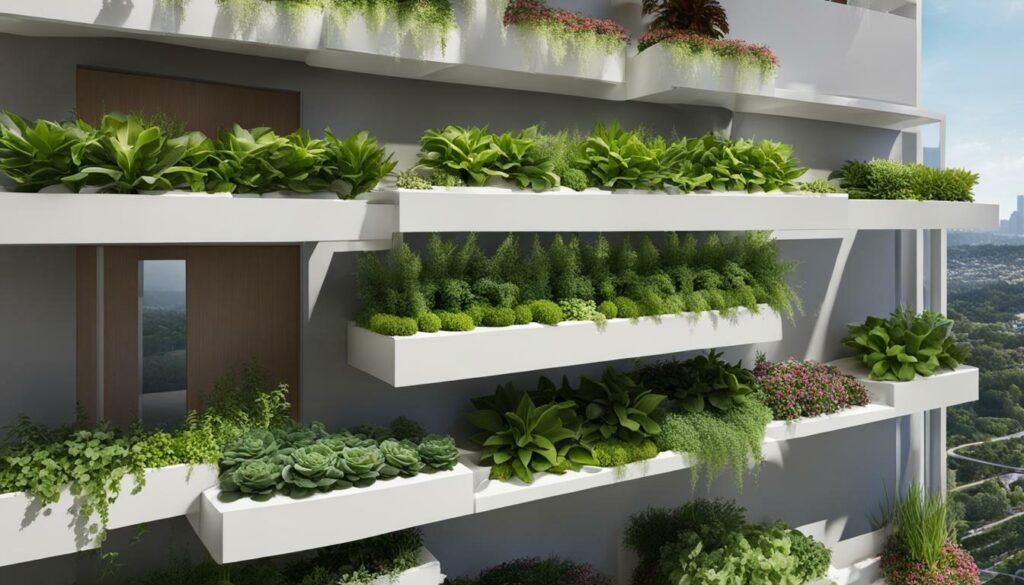
RailScapes Vertical Gardening Clips were launched in the spring of 2023 and retail for $24.95. This innovative product from Plant Traps aims to revolutionize balcony gardening and make it more accessible to a wider audience. By providing an easy and efficient way to create multi-tiered balcony gardens, RailScapes encourage sustainable outdoor living spaces that are both aesthetically pleasing and functional.
Benefits of RailScapes Vertical Gardening Clips:
- Easy installation without the need for tools
- Ability to suspend up to 15 lb. plants at any elevation on the railing
- Customizable and adjustable elevation for a cohesive and personalized vertical garden
- Versatile application for metal, wood, and vinyl railings
- Access to fresh herbs, flowers, or vegetables right outside your door
- Opportunity to maximize limited space and create a beautiful balcony garden
By offering an innovative solution for multi-tiered balcony gardens, RailScapes and their vertical gardening clips contribute to the growing trend of urban gardening and promote the benefits of incorporating plants into our living environments.
| Key Features | Specifications |
|---|---|
| Product Name | RailScapes Vertical Gardening Clips |
| Weight Capacity | Up to 15 lb. |
| Material | Durable and weather-resistant |
| Installation | Tool-free, clip-on design |
| Compatibility | Metal, wood, and vinyl railings |
| Price | $24.95 |
With RailScapes Vertical Gardening Clips, anyone can transform their balcony into a lush and vibrant garden, bringing the beauty of nature into their everyday lives.
Conclusion
In conclusion, commercial vertical garden solutions offer a transformative way to revolutionize spaces by creating eco-friendly, visually appealing, and space-saving environments. Vertical farming has emerged as a promising technique that allows for agricultural production within vertical structures like buildings. With the ability to grow crops in metropolitan areas where open space is limited, vertical farming has the potential to address food deserts and improve access to fresh produce in urban communities.
One of the key benefits of vertical farming is its sustainability. By using significantly less water than traditional farming methods and recycling water within the system, vertical farms can conserve water resources. Additionally, the controlled conditions provided by vertical farms reduce the need for pesticides and herbicides, making it a more environmentally friendly approach.
Various techniques are used in vertical farming, including hydroponics and aeroponics. These methods eliminate the need for soil and allow plants to receive nutrients and water directly, leading to higher crop yields. Vertical farms can be operated year-round, providing a consistent supply of fresh produce regardless of seasonal changes.
| Advantages of Commercial Vertical Garden Solutions: |
|---|
| Water conservation |
| Sustainable farming practices |
| Space-saving |
For those interested in starting their own vertical farm or investing in the industry, there are various options available. From small-scale domestic solutions to larger-scale vertical farming operations, individuals can find a suitable approach based on their aspirations and resources. Additionally, there are companies offering pre-packaged vertical farming solutions that can be quickly scaled up.
Notable examples of vertical farming solutions include innovative companies like Garden Stack and RailScapes. Garden Stack offers a modular vertical gardening system designed for home use, combining ancient irrigation techniques with modern technology. RailScapes, on the other hand, provides clips that allow for the creation of multi-tiered balcony gardens, offering a versatile and functional solution for outdoor and indoor spaces.
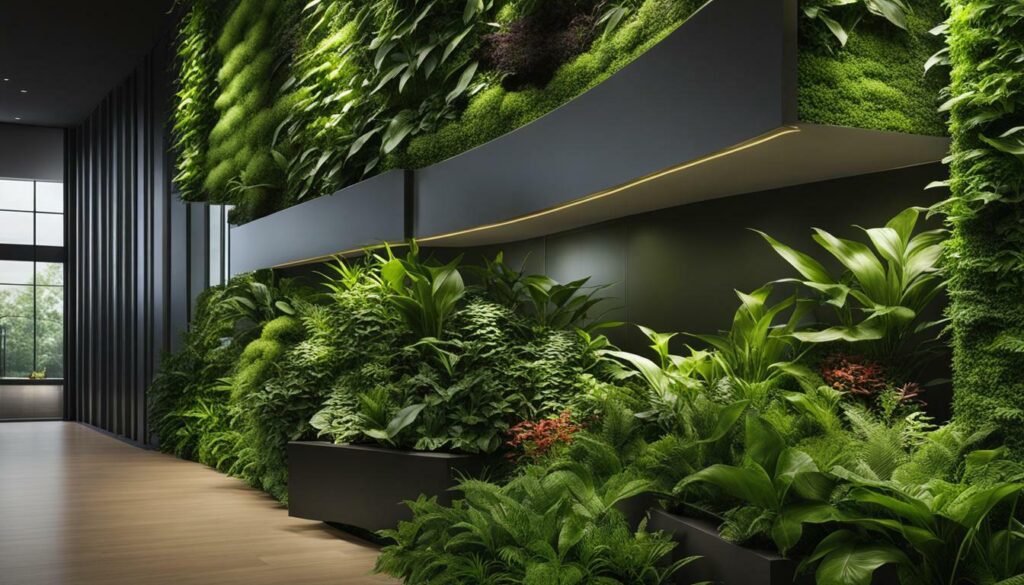
Resources and Further Reading
- Vertical Harvest: https://verticalharvest.com/

- Garden Stack: https://www.garden-stack.com/

- RailScapes: http://www.planttraps.com

For more information and in-depth resources on commercial vertical garden solutions, visit the websites provided above. Explore the possibilities of vertical farming and discover how it can revolutionize spaces, promote sustainability, and enhance access to fresh food.
Resources and Further Reading
For more information on commercial vertical garden solutions and related topics, check out these additional resources and reading materials.
1. Vertical Harvest: Visit the Vertical Harvest website for in-depth information on vertical farming and its potential to revolutionize agriculture.
2. Garden Stack: Learn more about the Garden Stack, a soil-based, modular vertical gardening system designed for home use, by visiting their website and Kickstarter prelaunch page.
3. RailScapes Vertical Gardening Clips: Find out how RailScapes’ innovative clips can help you create stunning multi-tiered balcony gardens by visiting the Plant Traps website.
These resources offer valuable insights into the benefits, techniques, and examples of commercial vertical gardening solutions. Whether you are interested in starting your own vertical farm or simply looking for ways to enhance your gardening experience at home, these resources will provide you with the information you need to get started.
How Can I Implement a Vertical Garden Solution in My Own Space?
Looking to bring the beauty of nature into your own space? Zooey Deschanel’s vertical garden project offers a creative solution. By utilizing vertical space, you can grow a variety of plants, herbs, and flowers in a stylish and functional way. Implementing a vertical garden can transform your space into a lush, green oasis.
FAQ
Q: What is vertical farming?
A: Vertical farming is a form of agriculture that is specifically designed to facilitate agricultural production inside vertical structures like buildings.
Q: What are the benefits of vertical farming?
A: Vertical farming offers several benefits, including water conservation, space-saving advantages, year-round cultivation, and the ability to improve access to fresh food in urban areas.
Q: What are some common techniques used in vertical farming?
A: Hydroponics and aeroponics are two common techniques used in vertical farming. Hydroponics involves growing plants in solutions of nutrients, while aeroponics involves growing plants in an air or mist environment with no soil and very little water.
Q: How can I start vertical farming?
A: Starting a vertical farm can be done by investing in existing vertical farms or raising capital to set up your own. There are also smaller-scale options available for home use using customized or off-the-shelf solutions.
Q: Can you provide examples of vertical farming solutions?
A: Some notable examples of vertical farming solutions include large-scale vertical farms using hydroponic systems, small domestic-scale vertical farms, and innovative modular systems like Garden Stack and RailScapes.
Q: What is Garden Stack?
A: Garden Stack is a soil-based, modular vertical gardening system designed for home use. It combines the ancient olla irrigation technique with modern technology to create a self-watering system for growing plants indoors year-round.
Q: What are RailScapes?
A: RailScapes are vertical gardening clips that can be used to suspend up to 15 lb. plants on railings, both indoors and outdoors. They provide a versatile and functional option for creating multi-tiered balcony gardens with easy installation and no tools required.
Q: What are the benefits of RailScapes?
A: RailScapes allow for the creation of stunning and functional vertical gardens, even in limited spaces. They offer an innovative way to display plants and make gardening accessible to anyone.
Q: Where can I find more information about commercial vertical garden solutions?
A: For resources and further reading on commercial vertical garden solutions, you can visit the websites of companies like Garden Stack and RailScapes, as well as explore other articles and publications on the topic.

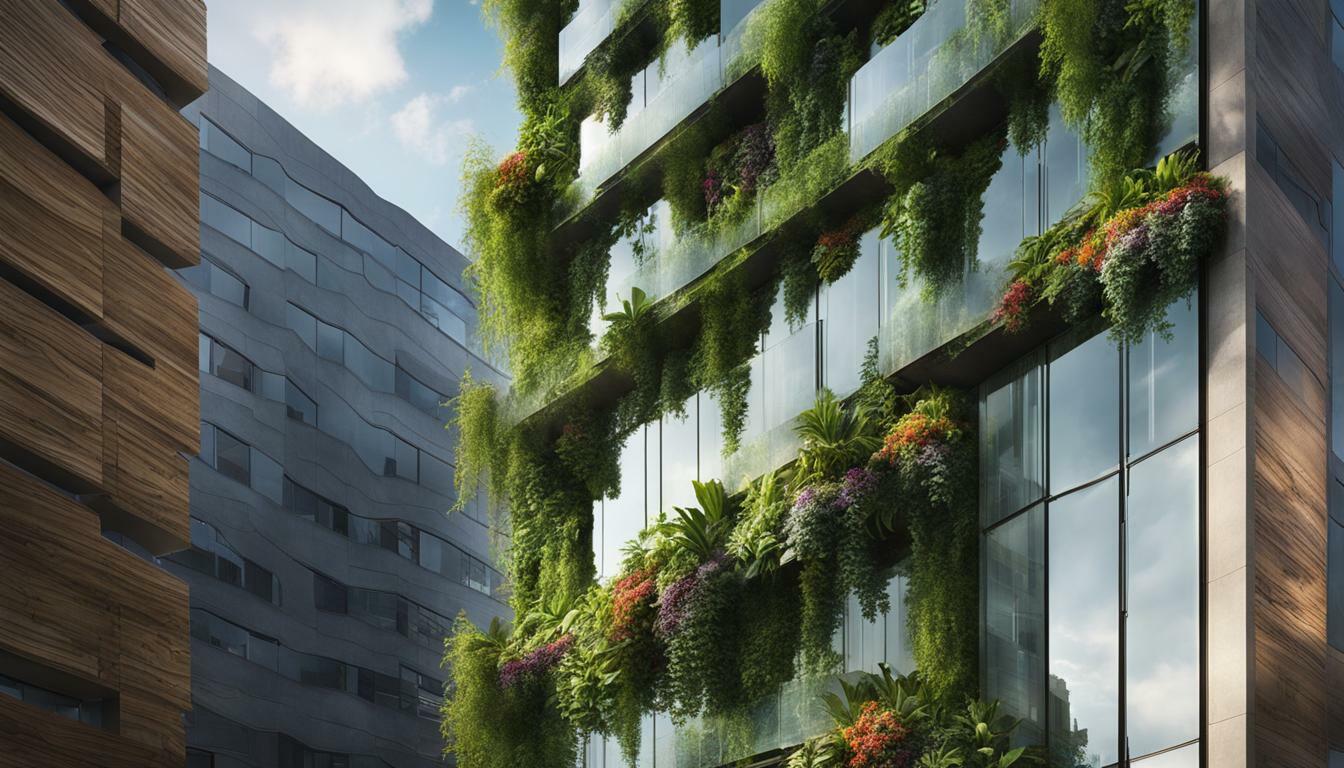
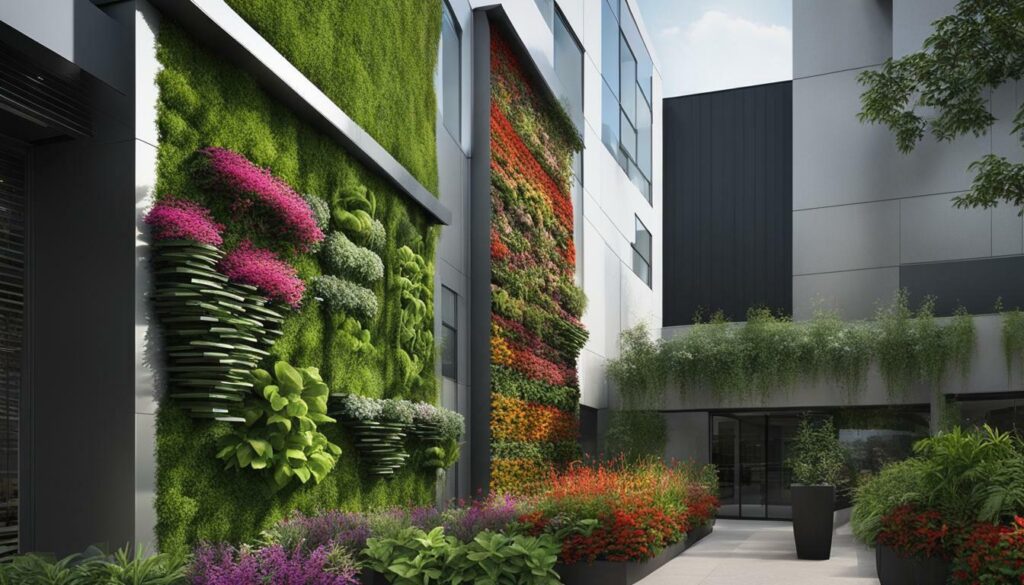 )
)